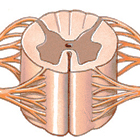Types of Anaesthesia for Caesarean Section
There are four types of Anaesthesia available for Caesarean section:
 |
 |
 |
 |
| Spinal Anaesthesia |
Epidural Anaesthesia |
Combined Spinal/
Epidural Anaesthesia |
General Anaesthesia |
In Union Hospital , most cases are done under Spinal Anaesthesia or General Anaesthesia, as compared to Epidural. This is because it:
- is quicker and possibly cheaper
- is easier
- is less painful
- uses a lower dose of local anaesthetic
- and produces a more reliable block
Spinal Anaesthesia (SA) allows the mother to be awake during the delivery of the baby by Caesarean Section. Local Anaesthetic solutions are administered into the spinal fluid (Spinal Anaesthetic). This causes loss of sensation up to the level of the breasts and loss of movement in the legs during the Caesarean Section.
The partner/husband can be present at the delivery with epidural or spinal anaesthesia, unless it is during off-office hours. The baby is usually more alert at delivery after this form of anaesthesia, compared to General Anaesthesia. Currently most women and anaesthesiologists choose to have this form of Anaesthesia.
General anaesthesia (GA) is also occasionally used for Caesarean Section. With GA you have intravenous drugs to induce you to sleep and you are kept asleep with a combination of Anaesthetic gases and intra-venous drugs. There are some Medical or Obstetric conditions where General Anaesthesia is preferable but generally, Spinal Anaesthesia is the preferred option because it is safer.
Epidural or combined Spinal/Epidural Anaesthesia is mostly used for labour pain during normal spontaneous delivery in Union Hospital & seldom used in the operating theatre. There may be special clinical conditions where this is preferred and your Anaesthesiologist will discuss with you should this option be deemed best for you.